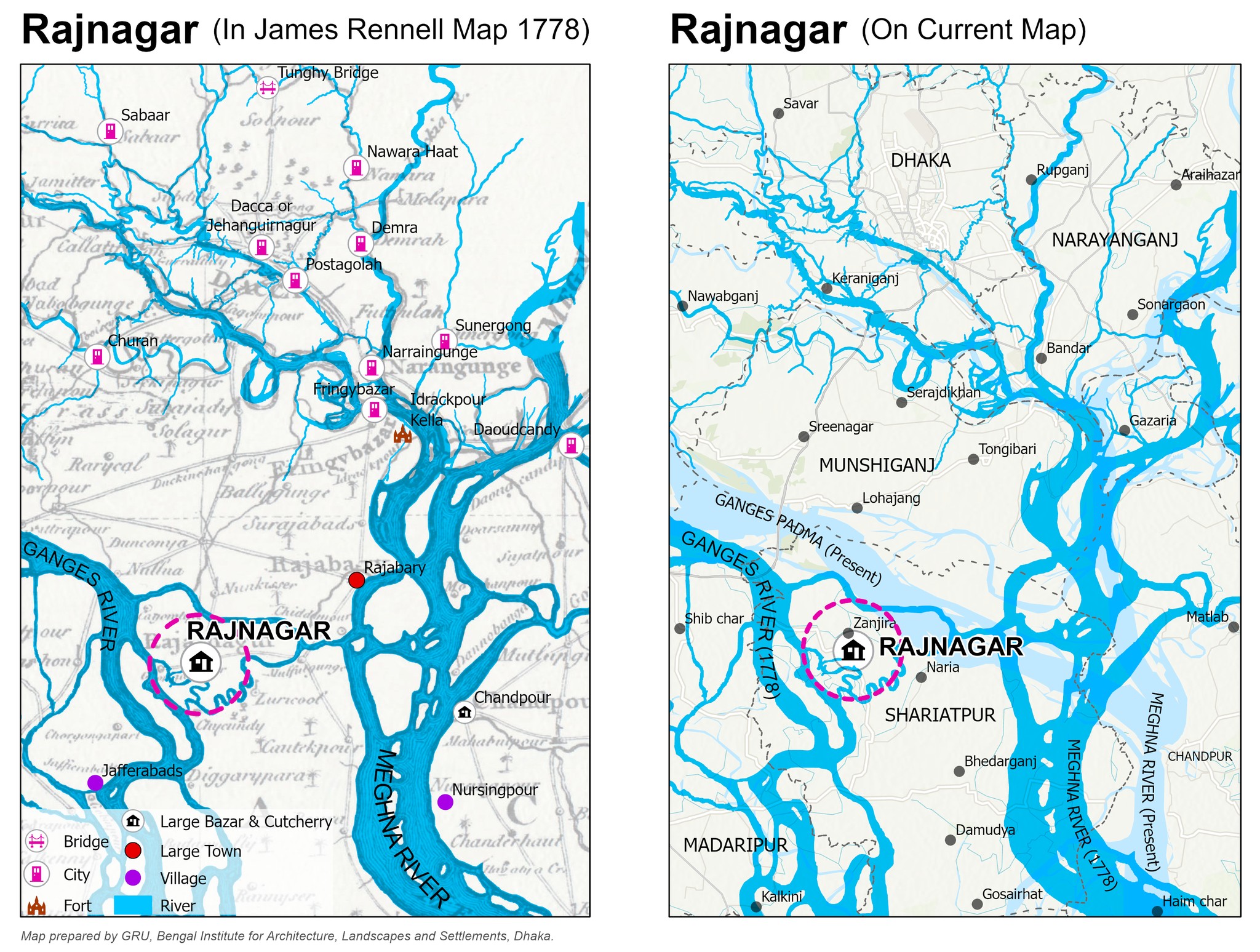

IN SEARCH OF RAJNAGAR: PART 1
A branch of the mighty Padma River once divided the Bikrampur area, the ancient political and cultural hub of Bengal now known as Munshiganj. The river took the name of Kirtinasha, “the destroyer of human achievements,” as it submerged the settlement of Rajbari of Maharaja Kedar Roy, one of the Baro-Bhuiyans on its north bank. On the southern bank, Raja Rajballabh established the settlement of Rajnagar, which was visible till 1867 until its immersion in the waters. Descendents of Rajballabh moved to the nearest village Palong, known as Shariatpur Sadar now.
The story of Rajnagar is about glorious architecture and the vanished city, and the tandab generated by Bengal’s rivers, especially the Padma.
Rajballabh, former dewan of Dhaka, was born in Beel Deonia under Bikrampur Pargana in 1707. His father was Krishnajiban Sen. He started his life as a muhuri in the Qanungo division. In 1756, he became the dewan of Dhaka under the Mughals and was titled as Maharaja. He was an accomplice of Ghasheti Begum and Mir Jafar in the power struggle against Nawab Siraj-ud-Daula. Like his Rajnagar, Rajballabh also faced a watery end. Later, Mir Qasim suspected him as a traitor and killed him by drowning in 1763. Though Raja Rajballabh is depicted as a negative character in history, his Rajnagar was a unique example of local architecture and the nagar system. Rajnagaar hardly comes up in our discourses. While many scattered resources can be found, no significant work has been carried out on this topic.
The Bengal Institute has recently begun to explore the history and geography of ancient Rajnagar to deepen understanding of how a 17th-century city made an impact on the economy and geopolitics of the Mughal Bengal, and how it eventually disappeared under the onslaught of the Padma waters. As an initial attempt, the Geographic Research Unit (GRU) of the Bengal Institute has analyzed historic topographic maps including the maps published by James Rennell in 1778 to locate the exact position of Rajnagar and its surrounding fluvial networks.
Historical Research and Text by- Hassan M Rakib, Geographic Research and Map by Sanjoy Roy, Bandhan Dhar and Sabiha Sabrina.